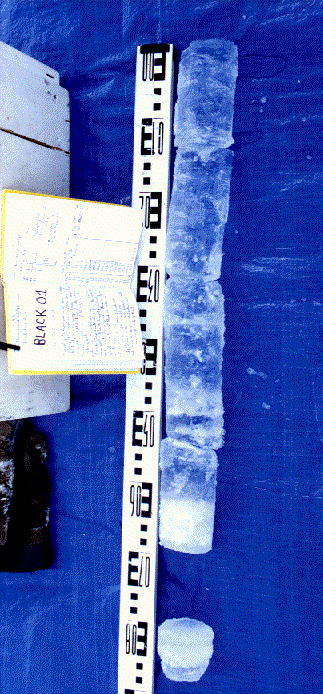
Collaborator: Dr. T.D. Prowse (NHRC, Saskatoon)
Excerpt from October 1998 Progress Report
Isotope stratigraphy of river ice is also being developed as an ancillary activity of Liard River MAGS investigations. As shown in the figure below, reliable reconstruction of over-winter isotopic composition of streamflow from ice archives has been achieved. This novel technique will serve to extend partitioning studies into the winter season to study the groundwater recession characteristics in each of the five study basins. The ice-on period is characterized by a gradual decline in total discharge. As shown for the Blackstone River, decline in discharge is accompanied by a
